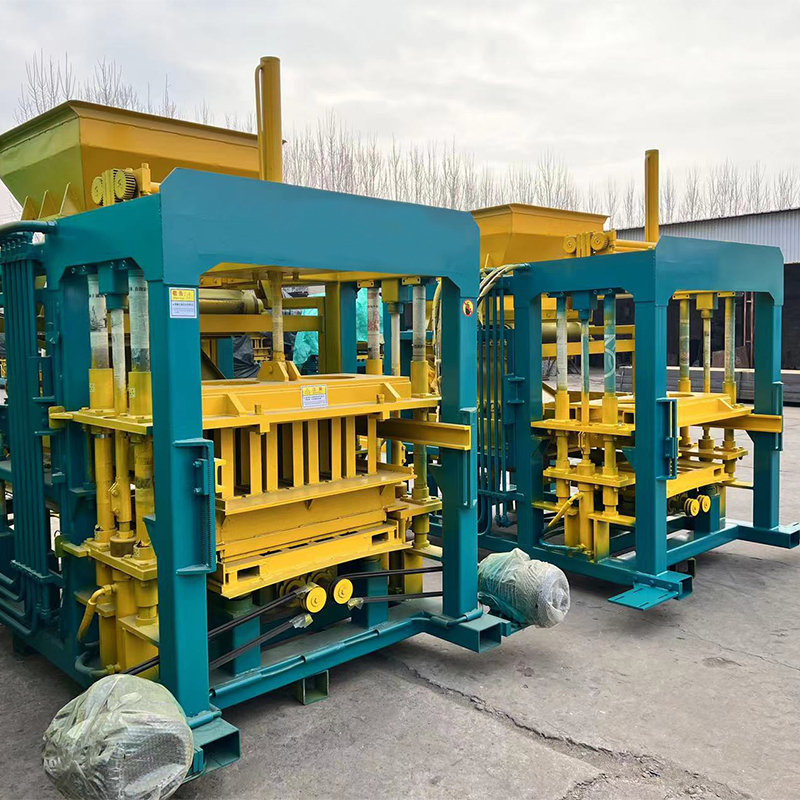
Image source :Aiweiblockmachine
The Evolution of Block Machinery
In the ever-evolving world of construction, the development of block machinery has been instrumental in shaping the way we build structures. From the rudimentary processes of handcrafted bricks to the advanced and automated block making machines of today, the journey of this technology has been one of innovation, efficiency, and sustainability. This article delves into the remarkable evolution of block machinery, tracing its origins, key milestones, and the transformative impact it has had on the construction industry.
I. The Origins of Block Machinery
1. Early Bricks and Masonry
The history of block machinery can be traced back to ancient civilizations where manual labor was the primary method of crafting construction materials. Early builders used materials like mud bricks, adobe, and stone blocks, which were labor-intensive to produce and lacked uniformity. These materials, while functional, were far from ideal in terms of efficiency and durability.
2. The Rise of Brick-Making Machines
The Industrial Revolution brought significant advancements to the field of construction. In the 19th century, manual brick-making processes began to give way to machines designed to shape bricks more consistently. Early brick-making machines were hand-cranked or powered by animals, significantly increasing production rates and improving the quality of bricks.
II. The Birth of Modern Block Machinery
1. Hollow Concrete Blocks
The late 19th and early 20th centuries saw the emergence of hollow concrete blocks, a pivotal innovation in construction materials. These blocks were initially produced manually, but the need for automation soon became evident as demand grew.
2. The First Block Making Machines
The 1920s marked a turning point with the invention of the first mechanical block making machines. These machines used hydraulic pressure to compact concrete into uniform blocks. While primitive compared to today’s standards, they laid the foundation for further innovations in block machinery.
III. Advancements in Block Machinery
1. Automation and Hydraulic Presses
Following World War II, block machinery underwent a rapid transformation. Hydraulic presses became the norm, allowing for greater pressure and precision during the block molding process. These machines improved both the speed and quality of block production.
2. Introduction of Pavers and Interlocking Blocks
In the mid-20th century, the introduction of paver block machines and interlocking block machines expanded the possibilities of construction. Pavers added aesthetic value to driveways and walkways, while interlocking blocks allowed for more stable and versatile structures.
3. Computerized Control Systems
The late 20th century brought computerization to block machinery. Computer-controlled block making machines allowed for precise control over the production process, resulting in blocks that met strict quality standards. This era also witnessed the integration of conveyor belts and automatic stacking systems.
IV. Sustainable Block Machinery
1. Lightweight and Insulating Blocks
As sustainability gained importance in construction, block machinery adapted to produce lightweight and insulating blocks. These blocks reduced energy consumption in buildings and lowered transportation costs due to their reduced weight.
2. Recycled and Green Materials
Block machinery has played a role in the sustainable construction movement by enabling the use of recycled materials such as fly ash and slag in block production. This not only reduces waste but also lowers the environmental impact of construction.
V. The Modern Era of Block Machinery
1. High-Speed Machines
Modern block machinery can produce blocks at astonishing speeds, with some machines capable of producing thousands of blocks per hour. This level of efficiency has revolutionized large-scale construction projects.
2. Automated Handling Systems
Automated handling systems have reduced the need for manual labor in block production facilities. Robots and conveyor systems efficiently move blocks through the various stages of production, from molding to curing and stacking.
VI. Future Trends and Innovations
1. Sustainable Practices
The future of block machinery is closely tied to sustainability. Innovations in eco-friendly materials, energy-efficient production processes, and reduced waste will continue to shape the industry.
2. 3D Printing
Emerging technologies like 3D printing are being explored for block production. This promising development has the potential to revolutionize construction by enabling on-site, customized block production.
3. Internet of Things (IoT)
IoT is being integrated into block machinery to monitor and optimize production processes. Sensors and data analytics offer real-time insights into machine performance and maintenance needs.
VII. Conclusion
The evolution of block machinery is a testament to human ingenuity and the relentless pursuit of efficiency, quality, and sustainability in construction. From humble manual methods to cutting-edge automated systems, this technology has come a long way. As we look to the future, the marriage of advanced materials, sustainable practices, and innovative technologies promises to further transform the way we build our world, ensuring a brighter and more sustainable future for the construction industry.
